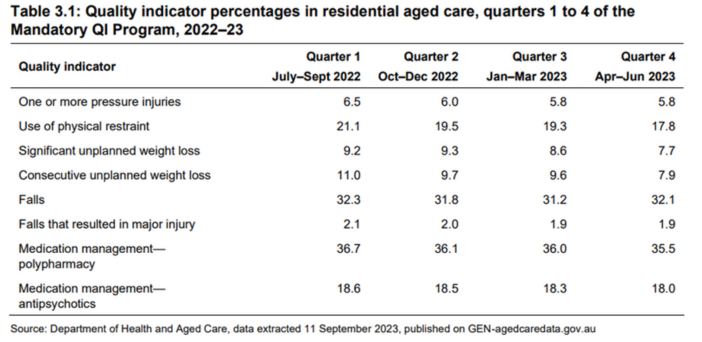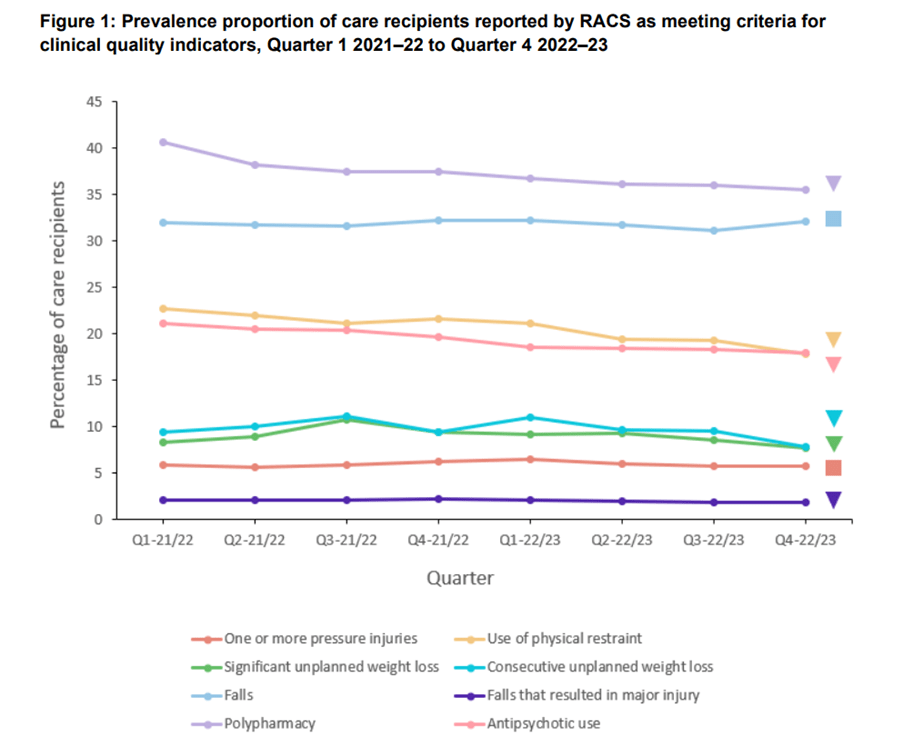Latest Quality Indicators data good news for the residential care sector
The latest data from the Government’s National Quality Indicators program confirms that the residential care sector is continuing to see a downward trend in the use of physical restraint, polypharmacy and other key quality indicators. The 22-page...

The latest data from the Government’s National Quality Indicators program confirms that the residential care sector is continuing to see a downward trend in the use of physical restraint, polypharmacy and other key quality indicators. The 22-page Residential Aged Care Quality Indicators Annual Report 2022–23 – which relies on an annual extract of data from 1 July 2022 to 30 June 2023 to ensure a more complete data analysis – reflects an ongoing trend in improved quality of care across the sector. Check out the table above and below.

As you can see, the rate of polypharmacy, use of physical restraint, antipsychotic use, consecutive unplanned weight loss, significant unplanned weight loss and falls that results in major injury all continued to decline.
Only the rates of pressure injuries and falls remained at similar levels to the previous quarters.
The National Mandatory Quality Indicator Program (QI Program) – which has been in place for residential care since 1 July 2019 to measure quality of care – was expanded from 1 April this year to include six new indicators:
- activities of daily living;
- incontinence care;
- hospitalisations;
- workforce;
- consumer experience; and
- quality of life.
Data for these new indicators will be included in the reporting once four quarters of data has been collected.





